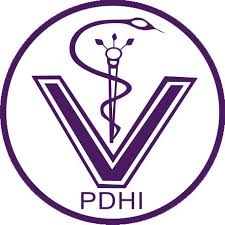Pembelian Ternak dan Kelembaban Tinggi Merupakan Faktor Risiko Leptospirosis pada Sapi di Girimulyo, Kulon Progo, Jogjakarta (PURCHASE OF CATTLE AND HIGH HUMIDITY WERE RISK FACTORS OF BOVINE LEPTOSPIROSIS IN GIRIMULYO, KULON PROGO DISTRICT)
Abstract
Leptospirosis is an acute infectious disease could to attack humans and animals such as dogs, cats,cows, pigs, and wild animals such as rats, weasels and squirrels. The death rate of human leptospirosis inIndonesia reached 2.5 to 16.5%. Leptospirosis attacked approximately 274 residents, 18 fatalities atKulonprogo disctrict, and designated as Extraordinary Events in 2011. The purpose of this reasearch is todetermine risk factors affecting the prevalence of leptospirosis in cattle in the area of human leptospirosisin Girimulyo, Kulon Progo. This study used 132 samples of cattle blood. Methods of examination withMicro Aglutination Test (MAT) conducted at the Center for Veterinary Research, Bogor. Micro AglutinationTest is done by creating a serum dilution with PBS in stages then added antigen in the form of various cultures leptospira serovar. Subsequently incubated at 28-30 ° C for 2 hours, and was reading the resultsunder a microscope dark field / phase contrast. Endpoint reading was 50% agglutination, highest finalserum dilution in serum-antigen mixtures that showed 50% agglutination is called the titer. Serum witha titer of 1:100 or more against one or more tested positive for serovar. Micro Aglutination Test result wasthe dependent variable (Y), while the independent variables (X) were factors of farmers, animal factors,enclosure factors, and feed factors. Univariate analysis was done to see descriptively each variable studied.Association between the prevalence of leptospirosis and risk factors was analyzed by Chi Square.Multivariate Logistic Regression Analysis was used to build models of leptospirosis disease to investigatethe risk factors associated with leptospirosis. Variables that influence the prevalence of leptospirosiswere measured magnitude of association by Odd Ratio. The results of study that the prevalence of bovineleptospirosis in Girimulyo subdistrict, Kulonprogo district was 7.6%. Risk factors for the prevalence ofleptospirosis in cattle in Girimulyo subdistrict, Kulonprogo district were livestock purchased factor (OR5.49) and a high humidity factor (OR 1.65). These results can be concluded that leptospirosis infection incattle is high (7.6%) in the area of human leptospirosis. The possibility cattle as a source of infection inhumans still needs further research.Downloads
Download data is not yet available.
Published
2014-08-11
How to Cite
MULYANI, Guntari Titik; SUMIARTO, Bambang; ., Yuriati.
Pembelian Ternak dan Kelembaban Tinggi Merupakan Faktor Risiko Leptospirosis pada Sapi di Girimulyo, Kulon Progo, Jogjakarta (PURCHASE OF CATTLE AND HIGH HUMIDITY WERE RISK FACTORS OF BOVINE LEPTOSPIROSIS IN GIRIMULYO, KULON PROGO DISTRICT).
Jurnal Veteriner, [S.l.], v. 15, n. 2, p. 199-204, aug. 2014.
ISSN 2477-5665.
Available at: <http://ojs.unud.ac.id/index.php/jvet/article/view/9647>. Date accessed: 14 oct. 2025.
Issue
Section
Articles
Keywords
leptospirosis, Girimulyo, Kulon Progo, MAT, risk factors


















